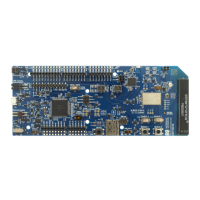Glossary
Application Programming Interface (API)
A language and message format used by an application program to communicate with an operating
system, application, or other service.
Cat-M1
LTE-M User Equipment (UE) category with a single RX antenna, specified in 3GPP Release 13.
Cat-NB1
Narrowband Internet of Things (NB-IoT) User Equipment (UE) category with 200 kHz UE bandwidth
and a single RX antenna, specified in 3GPP Release 13.
Development Kit (DK)
A development platform used for application development.
Device Firmware Update (DFU)
A mechanism for upgrading the firmware of a device.
Extended Discontinuous Reception (eDRX)
A method to conserve the battery of an IoT (Internet of Things) device by allowing it to remain
inactive for extended periods.
Global Positioning System (GPS)
A satellite-based radio navigation system that provides its users with accurate location and time
information over the globe.
Integrated Circuit Card Identifier (ICCID)
A unique serial number of a SIM card.
Integrated Development Environment (IDE)
A software application that provides facilities for software development.
International Mobile (Station) Equipment Identity (IMEI)
A unique code consisting of 14 digits and a check digit for identifying 3GPP-based mobile devices.
LTE-M
An open standard that is most suitable for medium throughput applications requiring low power,
low latency, and/or mobility, like asset tracking, wearables, medical, POS, and home security
applications. Also known as Cat-M1.
Narrowband Internet of Things (NB-IoT)
A narrowband technology standard with longer range, lower throughput, and better penetration
in, for example, cellars and parking garages compared to LTE-M. NB-IoT is most suitable for static,
low throughput applications like smart metering, smart agriculture, and smart city applications. Also
known as Cat-NB1.
Non-access Stratum (NAS)
4418_1412
19

